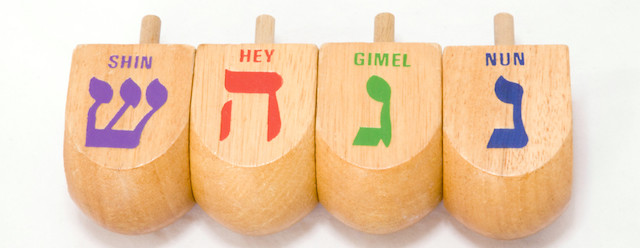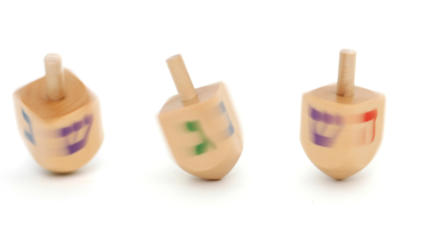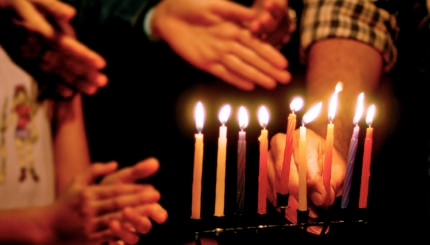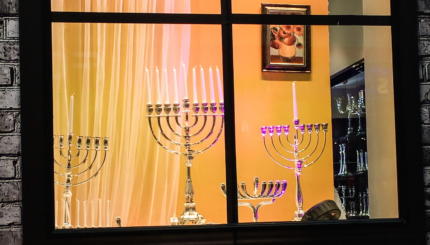A dreidel is a spinning top, with four sides, each marked with a different Hebrew letter (nun, gimmel, hey and shin). The custom of playing dreidel on Hanukkah is based on a legend that, during the time of the Maccabees, when Jewish children were forbidden from studying Torah, they would defy the decree and study anyway. When a Greek official would come close they would put away their books and take out spinning tops, claiming they were just playing games.
The letters on the dreidel are the first letters in a Hebrew phrase that means “A Great Miracle Happened There” (“There” being the land of Israel). In Israel, the letter peh (for the Hebrew word po, meaning “here”) replaces the letter shin to spell out “A Great Miracle Happened Here.”
For those who don’t read Hebrew, some dreidels also feature a transliteration of each letter. If yours doesn’t, use the photo below as a cheat sheet:

To play dreidel, you will need a lot of identical game pieces. People often use pennies or other coins, wrapped candies, nuts in the shell, poker chips, paper clips or Hanukkah gelt. At the beginning of each round, every player puts one game piece into the center “pot.” Players then take turns spinning the dreidel. When the top lands on nun, the player gets nothing; on gimmel, the player gets the entire contents of the pot; hey, the player gets half of the pot; and shin, the player must put a piece (or coin) into the pot.
With your help, My Jewish Learning can provide endless opportunities for learning, connection and discovery.
You can also just enjoy spinning your dreidel, and manufacturers make fun light-up versions, as well as art dreidels that make nice decorative and collectors’ pieces. A favorite children’s Hanukkah song, “I Have a Little Dreidel,” emphasizes the variety of dreidel designs that are enjoyed.
Check out our partner site Kveller’s list of funny and bizarre dreidels.
Here is a list of decorative dreidels you can buy on Amazon.
Explore Hanukkah’s history, global traditions, food and more with My Jewish Learning’s “All About Hanukkah” email series. Sign up to take a journey through Hanukkah and go deeper into the Festival of Lights.
dreidel
Pronounced: DRAY-dul, Origin: Yiddish, a spinning top, with four sides, each marked with a different Hebrew letter (nun, gimel, hay and shin), it is played with on Hanukkah.
Hanukkah
Pronounced: KHAH-nuh-kah, also ha-new-KAH, an eight-day festival commemorating the Maccabees' victory over the Greeks and subsequent rededication of the temple. Falls in the Hebrew month of Kislev, which usually corresponds with December.



